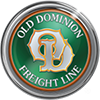Many years ago, under the ICC regulation, all pricing was published and filed in Washington, DC. Spot quotes were not an option. There were commodity column rates, point to point rates, and truckload classes in the NMFC.
Believe it or not, before modern technology and in the era of regulated trucking, there was a time when LTL pricing was a much simpler process. When deregulation happened in 1980, the floodgates opened with discounting, and eventually spot quotes appeared.
Many may not realize that the 20M line of rates and higher are outdated and do not serve a purpose. They are truckload rates and are not intended for LTL shipments. In today’s marketplace, it confuses shippers and freight payment firms. We also feel that it discourages automation because legacy programs alternate weight brackets to determine the cheaper charge. The 20M line of rates and higher were never meant to be discounted.
This leads to the spot quote.
As carriers raised prices over the years, customers soon realized that an 18,000 lb. shipment may be cheaper at a truckload price vs. LTL. Sometimes the LTL price was so high, you could ship two truckloads for the price of one LTL shipment!
Spot quotes became a reaction to the overpriced nature of LTL—something less than the truckload price, but not as high as the LTL price. Some LTL carriers tried to price spot quotes like truckload shipments, using all types of “contribution margin” formulas, and rates per mile, which were poor ideas as best.
The fact that LTL rates can be cost prohibitive for customers has led to spot quotes. But spot quotes also have some negative consequences to consider. Spot quotes have reduced claims liability, “normal service” does not happen since it moves after all other LTL freight has moved, and it becomes a manual payment process as this exception rate may or may not match the invoice. Carriers also sometimes accept loads without knowing the full address or consignee involved.
LTL is more expensive than truckload because it is more expensive to operate. LTL companies pay Pickup and Delivery (P&D) drivers an hourly wage to pick freight up, pay linehaul drivers a rate per mile, and a P&D driver to deliver it. Of course, if we cross-dock it along the way, that dock person is also getting paid an hourly wage. LTL carriers also pay for the overhead of their service centers and support a much larger clerical staff.
OD can help you understand your freight shipping options and relieve stress by ensuring that your freight is delivered on-time, damage-free. Call our OD Customer Service team today at (800) 235-5569 for more information.
Contact us by email or simply call 1-800-235-5569 to be connected to an Old Dominion customer service representative.

